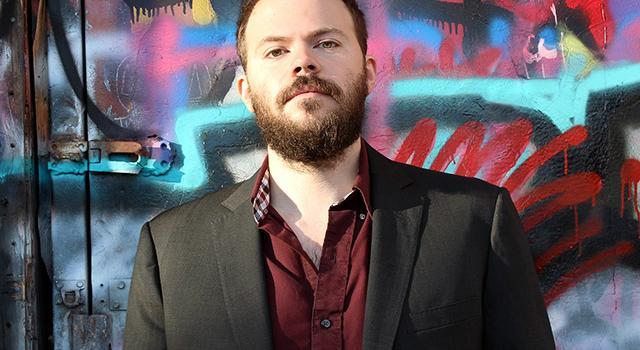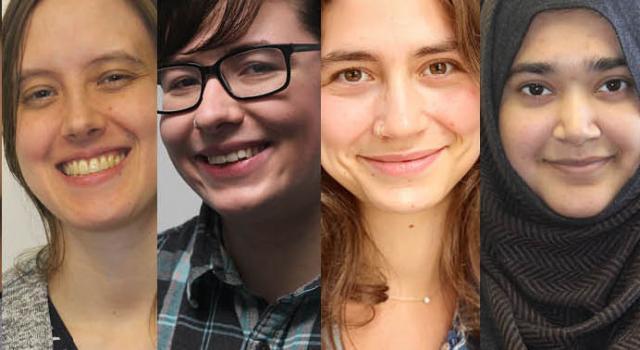Culture, Brain, and Development
"How do children learn about and create culture?" "How do biology and culture influence brain development and health?" "How does gender differ across cultures and affect how we process the world?" "How does typical versus atypical brain development impact how we become social agents?" and "How do our life experiences influence the expression of genes?"
Students interested in these questions and others engage the intersections of culture, mind/brain, and human biological development.
Student Project Titles
- The Influence of Race and Urban Clothing on Implicit Stereotyping
- Understanding Activist Trauma & Creative Tools of Support
- What Does Art Mean to the Youth in Chinese "Art Cram School?" an Ethnography in Wuhan, China
- Investigation of the Diet and Nutritional Needs of Children with AIDS in China
- The Instrument Body: The Physiology and Psychology of Playing Music
- Narrating Neuropathology: A Study of Women and Bipolar Disorder
- The Effects of PCBs on Brain Development
- Street Child Access to Health Care in Metro Manila, Philippines
- How are Biology, Psychology and Culture Implicated in the Development of Emotional Life?
- Okiciyapi: Improving the Standard of Living on Pine Ridge Indian Reservation in Pine Ridge, South Dakota
- Comparison Between Chinese and Korean Psychiatrists' Mental Health Practices
- Autism and Ghanian Culture
- Reading, the Brain, and Reading the Brain: A Developmental study in working memory using Event Related Potentials
Sample First-Year Course
Adolescent Development
Adolescence is often thought of as a time of great change and upheaval as children navigate the transition into adulthood. Raging hormones, changing social expectations and relationships, and developing autonomy all contribute to this tumultuous time. This course will examine the biological, cognitive, and social changes that occur during adolescence to develop a better understanding of this unique period of development. Using psychological as well as neuroscience and social science literatures the course will examine adolescence through multiple perspectives to develop a well-rounded picture of this developmental period. Students will be asked to read primary literature in psychology and neuroscience as well as from other relevant fi elds such as anthropology and sociology.
Sample Courses at Hampshire
- Abnormal Psychology
- Adolescent Development
- Bioethics in a Post-Genomic Age
- Bodies, Guts, and Bones
- Brain and Cognition
- Brain Mechanisms
- Buddhism and Psychotherapy
- Consumption and Happiness
- Human Biological Variation
- Mind and Brain: Evolution and Culture
- Minding Culture: The Case of Mental Illness
- Neuroendocrinology of Behavior
- The Philosophy and Science of Happiness
- The Plastic Brain: Environmental and Cultural Influences
- Producing Youth Culture
- The Science of Stress
- Sex, Death, and Teeth
- Sex on the Brain: Gender, Sex, and Biology
- Stress across Cultures
Through the Consortium
- Child Development (UMass)
- Cognition and Instruction Design (SC)
- Feminism and Knowledge (MHC)
- Hormones and Behavior (AC)
- Language and Cognitive Development (UMass)
- Science and Gender (AC)
- Theory of Mind (SC)
Facilities and Resources
Event-Related Potential (ERP) Lab
Hampshire is one of the few undergraduate institutions where students have the ability to do their own research examining brain activity. In the Event-Related Potential (ERP) Lab, student researchers can use EEGs (electroencephalograms) to observe brain activity while participants perform various computer tasks. This allows us to learn about the timecourse and general location of brain activity related to specific tasks. Students learn to use these techniques through classes, and then work on faculty research and/or design their own research projects.
Neuroendocrinology and Behavior (NEB) Lab
The Neuroendocrinology and Behavior (NEB) Lab is a space and collaborative group of students and faculty doing research to test questions about the role of the nervous and endocrine systems in behavior. Major areas of focus in the lab are social behaviors (parental behavior, pair-bonding, empathy, etc.) and stress reactivity (physiological responses to acute or chronic stressors including brain regulatory and epigenetic mechanisms).
The lab is equipped with two environmental chambers, a microtome, and a microplate reader for tissue histology and hormone immunoassays. We also have tools for controlled behavioral and physiological testing. Early life social environment has profound influence on brain organization and behavioral repertoire. Exposure to stressors can similarly generate lasting modifications to brain function and behavior. The NEB lab is a place to examine the mechanisms for these changes in a community of scholars.



